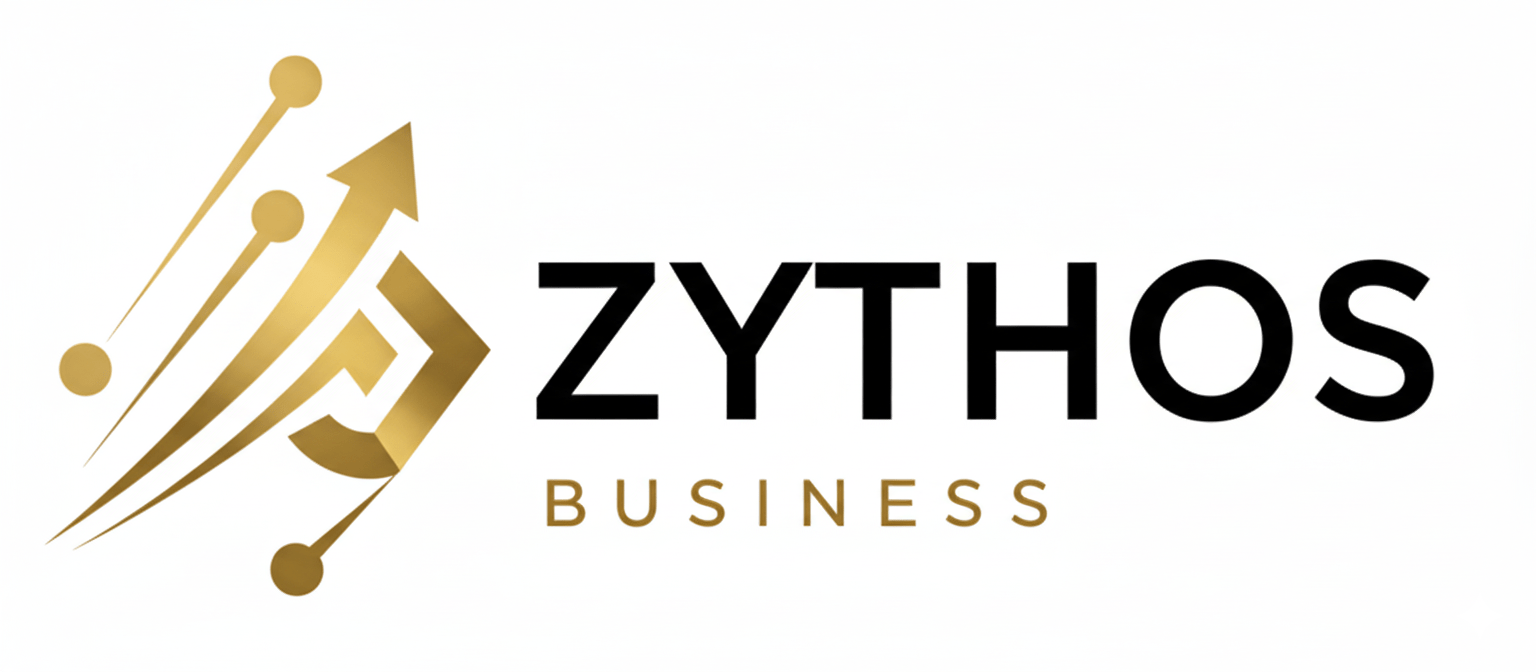At first glance, the figures released by KakaoBank, South Korea’s largest digital-only lender, in early November 2025 paint a picture of resounding success. The entity announced a record-breaking cumulative net profit for the first three quarters of the year, reaching 375.1 billion won (approximately $256 million).1 This milestone, a 5.5% increase from the previous year, seems to solidify the narrative of a neobank that has not only achieved massive scale but has mastered the challenge of sustainable profitability—a hurdle where many Western counterparts have faltered.
- Anatomy of a “Platform”: Deconstructing KakaoBank’s Revenue Engine
- The Platform and Commission Business: The “Marketplace” Model
- The Silent Giant: Treasury Management and Proprietary Investment
- The Future: AI as the Platform’s Evolution
- The “Unfair Advantage”: The KakaoTalk Ecosystem as the Empire’s Foundation
- The Korean Neobank Wars: The Local Context
- KakaoBank: The Ecosystem Giant (“Ecosystem-Led”)
- Toss Bank: The “Fintech-First” Challenger (“Product-Led”)
- K-Bank: The Niche Player (“Partner-Led”)
- Global Perspective: The Neobank Profitability Playbook
- Case Study 1: Revolut (UK/Global) – The Marketplace Model
- Case Study 2: Nubank (Brazil/LatAm) – The Lending-at-Scale Model
- Case Study 3: Chime (USA) – The Interchange-Utility Model
- The Korean Mirror: Relevance and Lessons for the Spanish Market
- Imagin (from CaixaBank): The Spanish “Kakao” Model
- Openbank (from Santander): The “Toss” / Traditional-Digital Model
- The Future of the Bank Is to Not Be (Just) a Bank
However, a deeper analysis of the quarterly results reveals a hidden tension and a fundamental strategic challenge. This cumulative profit masks a more complex reality: quarterly net profit (Q3) actually fell 10.3% compared to the same period last year, landing at 111.4 billion won.1 This contraction is not an anomaly; it is a signal of structural weakness in the traditional banking model.
The origin of this challenge stems directly from the core business of banking: credit intermediation. KakaoBank’s cumulative interest income, the pillar of any traditional bank, decreased by 3.1% year-over-year to 1.49 trillion won.1 This drop is due to a perfect storm of external factors. On one hand, regulatory pressure from the South Korean government to tighten controls on mortgage and household lending has curbed credit expansion.1 On the other, the entity has suffered from margin compression in a low-interest-rate environment, which has eroded its Net Interest Margin (NIM), contracting to 1.81% in the third quarter.5
This is where the true strategic story emerges. If KakaoBank were a traditional bank, this quarterly profit drop and NIM contraction would be a severe warning sign. But it is not. The unexpected hero of the earnings report, and the key to its record cumulative profits, is the non-banking revenue engine. Non-interest income soared 26.7% year-over-year, reaching 835.2 billion won in the first nine months of 2025.1
KakaoBank’s Q3 2025 results, therefore, are not just a financial update; they are the clearest evidence yet of a strategic metamorphosis underway. KakaoBank is actively demonstrating that its future (and its profitability) does not lie in the narrow margins of lending money, but in the monetization of a digital ecosystem platform. The entity is successfully decoupling its success from the volatile interest margins that plague its competitors.
The most important figure in the entire report is not the net profit, but the ratio: non-interest income now accounts for 36% of all KakaoBank’s operating revenue.1 This number is the key metric that defines its transition from a “digital bank” to a “financial super-app.” This report will analyze how this model is redefining banking in South Korea and what crucial lessons it offers to global markets, including the United States and Europe.
Table 1: KakaoBank Results Breakdown (First Three Quarters 2025 vs. 2024)
| Metric | First 3 Quarters 2024 (KRW) | First 3 Quarters 2025 (KRW) | Change (%) |
| Cumulative Net Profit | ~355.5 Billion | 375.1 Billion | +5.5% |
| Quarterly Net Profit (Q3) | 124.2 Billion | 111.4 Billion | -10.3% |
| Total Operating Revenue (Cum.) | ~2.199 Trillion | 2.330 Trillion | +6.0% |
| Interest Income (Cum.) | 1.540 Trillion | 1.490 Trillion | -3.1% |
| Non-Interest Income (Cum.) | 659.1 Billion | 835.2 Billion | +26.7% |
| Non-Interest Income (% of Total Op.) | 30.0% | 35.8% | +580 bps |
Source: Data compiled from KakaoBank’s Q3 2025 earnings reports.1
Anatomy of a “Platform”: Deconstructing KakaoBank’s Revenue Engine
The term “non-interest income,” which reached an impressive 835.2 billion won 6, is a broad category that is often misunderstood. To understand KakaoBank’s true strategy, it is imperative to deconstruct this “black box” into its operational components. This 26.7% growth 1 is not a fluke; it is the result of a deliberate diversification strategy built on three fundamental pillars: 1) The fee and platform business (the marketplace), 2) Treasury management and proprietary investment (the silent giant), and 3) The future evolution toward artificial intelligence.
The Platform and Commission Business: The “Marketplace” Model
This pillar is the core of KakaoBank’s vision as a super-app. Fee and platform income grew 4.7% year-over-year in the first three quarters 1, while other reports, focusing strictly on “platform” revenue, cite 7% year-over-year growth in Q3.5 While this growth may seem modest compared to the 26.7% total, it represents the foundation of a high-margin, low-risk financial marketplace.
The star service of this marketplace is the “Loan Comparison Service”.1 Here, KakaoBank has understood a crucial lesson: it is more profitable to be the mall than a single store. Instead of competing fiercely on lending margins, KakaoBank acts as a neutral distributor or intermediary. It connects its massive user base with loan products from over 70 financial partners.8 The bank earns a commission for each successful transaction without assuming the credit risk or balance sheet risk. The success of this model is evident: in the third quarter of 2025 alone, this service handled 1.224 trillion won in executed loans, an impressive 22% increase from the prior year.8
The second pillar of the marketplace is the Investment Platform, an area where KakaoBank has been an aggressive pioneer. It was the first Korean neobank to challenge the financial investment business.9 The strategy is the same: leverage the app’s trust and traffic to act as the primary access point to financial markets. Its services include simplified securities account opening with partner firms (4.2 million accounts opened via the app in two years) 10, trading of domestic and foreign stocks, IPO subscriptions, and a benefits comparator for retirement plans (IRP).9
The success of this investment democratization is personified in its “MMF Box” product, an easy-access investment account for money market funds (MMF). This product has been a resounding success, capturing nearly 70% of the retail MMF market.5 The expansion is ongoing: KakaoBank, which offered 45 fund products as of September 2025, plans to expand its catalog to 100.9
Finally, this category is rounded out by additional revenue streams from in-app advertising 1 and fees from services like firm banking and open banking.11
The Silent Giant: Treasury Management and Proprietary Investment
The 4.7% growth in platform commissions alone does not explain the 26.7% jump in total non-interest income. This is where the second, less visible but immensely powerful, pillar comes in: Treasury Management.
KakaoBank’s scale is its primary asset. At the end of Q3 2025, the bank had 26.24 million customers 8 and managed a staggering 65.7 trillion won in deposits.6 This enormous amount of liquidity, much of which is captured at a very low cost (thanks to its popular current and group accounts) 12, is a double-edged sword. It is a liability on the balance sheet, but it is a fundamental strategic asset.
KakaoBank does not just let this float sit idle. The entity actively manages an “assets under management” (AUM) portfolio for its treasury which, driven by deposit inflows, grew to 25.7 trillion won.5 The entity generates significant profits by investing this liquidity in a diversified portfolio of bonds, alternative investment products, and other financial instruments.8
This reveals a key strategic synergy. The bank’s ability to attract 65.7 trillion won in low-cost deposits 6 is the engine that fuels two distinct profit centers. On one hand, it funds its loan portfolio (generating interest income, albeit declining). On the other, it funds its proprietary investment portfolio (generating non-interest income, which is growing rapidly). Low-cost deposits are, therefore, the foundation that allows KakaoBank to pivot its profitability model from the former to the latter.
The Future: AI as the Platform’s Evolution
KakaoBank’s strategy is not static; it is an evolving system. The next step in this metamorphosis is the transition from an “app” to an “assistant,” a pivot to an “AI-first” model.1 The goal is to use artificial intelligence not as a simple chatbot, but as the fundamental layer of the user interface.
The plans are concrete. The company plans to introduce “AI transfer services” and an “AI Group Treasurer”.5 The vision is to allow users to perform complex transactions and manage their finances (including the popular group accounts) using natural conversational language.5
The strategic implication of this move is profound. It’s not just about improving the user experience; it’s about building an impenetrable competitive “moat.” In a market where financial products (loans, accounts) are becoming undifferentiated commodities, competition is shifting from price (interest rates) to friction (ease of use). If a user can manage their finances simply by talking to their KakaoBank app, the switching cost to a competitor (even one offering 0.25% more interest) becomes prohibitively high. AI is not a feature; it’s the glue designed to lock the user into the KakaoBank ecosystem for life.
The “Unfair Advantage”: The KakaoTalk Ecosystem as the Empire’s Foundation
KakaoBank’s success and its ability to amass 65.7 trillion won in deposits 6 cannot be understood in isolation. Its rise did not begin with a banking license in 2017; it began much earlier, with the launch of a messaging app in 2010.14
The origin of KakaoBank’s dominance lies with its parent company and its “unfair advantage”: the KakaoTalk ecosystem. KakaoTalk is not merely a popular app in South Korea; it is an omnipresent social utility. With 49 million monthly active users (MAU) in a country with a population of 52 million 14, KakaoTalk has a market penetration of over 94%.15 For the Korean consumer, KakaoTalk is not a choice; it is the connective tissue of digital life.
This omnipresence provided KakaoBank with the most powerful strategic weapon in consumer banking: a customer acquisition cost (CAC) of zero, or close to it. When KakaoBank launched in July 2017, it didn’t start from scratch, asking users to trust a new brand. It simply leveraged the existing user base and brand trust of Kakao.17
The launch figures are legendary and remain a business school case study. In the first 24 hours, the entity attracted over 300,000 subscribers.17 In just two weeks, it surpassed two million customers.17 Traditional banks take decades and spend billions on marketing and branch construction to achieve this scale. KakaoBank did it in days, simply by converting messaging users into banking customers.17 This initial advantage has been maintained and compounded: eight years later, the bank serves 26.24 million customers.8
More important than the total number of customers is their level of engagement. KakaoBank reports an astonishing 19.97 million monthly active users (MAU).1 This figure, more akin to a social network than a bank, is the entity’s true competitive “moat.” A traditional bank competes for deposits; KakaoBank competes for user screen time and attention.
The Kakao empire functions like a perfectly integrated circulatory system, a synergy of three pillars that feed each other 21:
- KakaoTalk (The Social Layer): This is the entry point. The user “lives” in the chat app, where their social and commercial interactions take place.
- KakaoPay (The Transactional Layer): This is the payments network that allows value to flow frictionlessly inside the chat. It enables payments, instant transfers, and purchases.21
- KakaoBank (The Value Layer): This is the destination where value “rests” and is monetized. It is the bank account where users store their deposits and access value-added products (loans, investments, insurance).22
This structure allowed KakaoBank to apply a tech startup playbook to the archaic banking industry, an “activation first, monetization second” model.19 Step 1 (Activation) involved using the extreme convenience of KakaoTalk and KakaoPay for millions of users to “activate” their bank account, often in under seven minutes.19 Step 2 (Monetization) began once users were inside, their deposits secured, and their traffic (MAU) measured. At that point, KakaoBank began monetizing that captive audience, not as a traditional bank (with loans only), but as a tech platform (through marketplace commissions, advertising, and investment services).8
This dynamic has fundamentally redefined how investors value the company.10 Analysts and investors have stopped valuing KakaoBank as a “bank,” which would be valued based on its book value or interest margins. Instead, the market sees it as “a platform with a banking license”.10 This perception shift is crucial. It means its strategic priorities are those of a Big Tech firm (MAU growth, engagement, data mining, customer lifetime value) and not those of a traditional bank (credit risk management, NIM, branch efficiency).
The integration is so deep that the ecosystem creates its own “gravity”.22 Users don’t choose KakaoBank because it is objectively the best banking product in every category. They choose it because it is the most convenient, intuitive, and seamless financial extension of their digital life—which already takes place, almost entirely, within the Kakao universe.
The Korean Neobank Wars: The Local Context
KakaoBank’s dominance, while impressive, is not absolute. The South Korean market is not a monopoly but a fascinating digital banking laboratory. It is, in fact, one of the few markets in the world with three pure-play neobanks (KakaoBank, Toss Bank, and K-Bank) that have not only survived but have all reached profitability.24 Analyzing their divergent strategies is crucial to understanding that the “Kakao model” is a deliberate strategic choice, not the only path to success.
KakaoBank: The Ecosystem Giant (“Ecosystem-Led”)
As detailed, KakaoBank’s model is based on breadth. Its strategy is “Ecosystem-Led.” It leverages the colossal MAU of KakaoTalk for near-zero CAC 17 and then monetizes that audience through a diversified platform of services (fees, treasury, investments).8 Its primary focus is to be the distributor of financial services.
Toss Bank: The “Fintech-First” Challenger (“Product-Led”)
Toss Bank is the perfect counterpoint to KakaoBank. Its parent company, Viva Republica, is not a messaging or social media company; it is “fintech-first”.25 Toss Bank did not have the “unfair advantage” of a pre-existing chat ecosystem.24 It had to build its customer base from scratch, competing on the merit of its products.
Its strategy is “Product-Led,” based on depth and specialization. Toss Bank reached its first profitable quarter in Q3 2023 24, but its profitability engine is radically different from KakaoBank’s: its profits come overwhelmingly from interest income—the very metric KakaoBank is strategically abandoning.
Toss Bank has succeeded by building “highly competitive” financial products 24 and by specializing in a niche that KakaoBank serves less intensely: medium- and low-risk lending. As of June 2023, borrowers in this segment accounted for 38.5% of Toss’s portfolio, compared to just 27% at KakaoBank.24
This doesn’t mean Toss ignores the platform model. Like Kakao, it is aggressively moving into the financial investment business. However, it is doing so by building on its own “Wooden rolling” wealth management platform, which has already processed 18 trillion won in products and has obtained preliminary approval for an investment business license.9
The dichotomy is clear. KakaoBank is a “Super-App” (like WeChat) where finance is just one more vertical.25 Toss Bank aims to be a “Total Financial Platform”—that is, a super-app exclusively for financial services. Kakao’s model is more diversified, but Toss’s is more focused on the financial core.
K-Bank: The Niche Player (“Partner-Led”)
K-Bank is the third profitable player and the first of the pure-play neobanks to launch. Its strategy has been “Partner-Led.” Its initial advantage and primary growth engine came not from a social ecosystem (like Kakao) or superior products (like Toss), but from a key strategic partnership with Upbit, Korea’s largest crypto exchange.24 This partnership provided it with a steady stream of customers and deposits.
However, K-Bank is the laggard of the three in strategic diversification. As of late 2025, it is the only one of the trio that has not yet made an active attempt to enter the lucrative financial investment business.9 Its focus appears to be on stabilizing its existing profit structure and, finally, successfully completing its Initial Public Offering (IPO), a goal that has been postponed in the past.9
The Korean laboratory thus demonstrates that there is no single model. There are at least two clear paths to neobank profitability:
- The Kakao Model (Breadth): Win through a low-CAC ecosystem, leveraging a captive audience to sell a wide range of platform services.
- The Toss Model (Depth): Win through superior, specialized financial products (like medium-risk credit or high-interest rates) that attract customers on their own merits.
Table 2: The Battle of the Korean Neobanks (Key Metrics 2025)
| Metric | KakaoBank | Toss Bank | K-Bank |
| Total Customers | 26.24 million (Q3 2025) 8 | ~9 million (2024) 24 | ~10 million (2024) [28] |
| Active Users (MAU) | 19.97 million (Q3 2025) 1 | 13.92 million (2022) [29] | N/A |
| Profitability | Profitable (Record profit Q3 2025) 1 | Profitable (First profitable Q 2023) 24 | Profitable (2023 profit) [27] |
| Business Model | “Ecosystem-Led” (Platform) [8, 17] | “Product-Led” (Interest, Lending) [24, 25] | “Partner-Led” (Crypto Niche) 24 |
| Investment Focus | High (Market leader, 45 funds) 9 | High (In development, license obtained) 9 | Low (Not yet entered) 9 |
Global Perspective: The Neobank Profitability Playbook
KakaoBank’s strategic pivot away from interest-income dependency in favor of a diversified platform model is not an isolated Korean phenomenon. It is, in fact, the manifestation of “Phase 2” in the evolution of neobanks globally: the critical transition from “growth at all costs” (Phase 1) to “sustainable profitability” (Phase 2).
An analysis of the world’s most successful and profitable neobanks reveals that no single formula for success exists. Instead, four distinct and viable business models have emerged. KakaoBank’s strategy is one of them, but comparing it with the others offers a complete vision of digital banking’s future.
Case Study 1: Revolut (UK/Global) – The Marketplace Model
Revolut is the closest global analog to KakaoBank’s platform strategy. With a customer base exceeding 60 million globally 30 and a consolidated profitable status (reporting $1.4 billion in pre-tax profit for 2024) 31, Revolut is proof that the financial super-app model is viable in the West.
Its revenue model is the definition of a “robust mix of revenue streams”.31 Revolut’s profitability doesn’t depend on one thing, but on a diversified and expanding marketplace of financial services. An analysis of its 2024 revenues 31 shows:
- Card Payments (Interchange): 43% growth.
- Wealth (Investment & Crypto): Explosive 298% growth.
- FX (Foreign Exchange): 58% growth.
- Subscriptions (Premium, Metal, etc.): 74% growth.
Like KakaoBank, Revolut uses a low-cost bank account as an entry point to upsell users into a higher-margin ecosystem of services (subscriptions, investing, FX).33
Case Study 2: Nubank (Brazil/LatAm) – The Lending-at-Scale Model
Nubank represents the opposite business model to KakaoBank’s pivot. It is a neobank giant, with an almost unimaginable scale of 107.3 million customers in Latin America 35 and staggering profitability ($2.2 billion in adjusted net income in 2024).36
However, Nubank’s engine (for now) is not a diversified platform, but a traditional banking model executed with digital perfection: lending money at massive scale. Unlike Kakao and Revolut, Nubank is an interest income giant. Its Net Interest Income (NII) reached a colossal $2.1 billion in the second quarter of 2025 alone.35 Its disruptive “hook” wasn’t a chat app, but a superior financial product: the no-fee credit card in a notoriously expensive market.37
Nubank proves that the traditional “lending-at-scale” model is still incredibly profitable if combined with a low acquisition cost (achieved via a viral “hook” product) and a low-cost tech platform. However, analysts argue that its current market valuation already prices in its future transition to a platform and marketplace model, following the path Kakao and Revolut are already on.38
Case Study 3: Chime (USA) – The Interchange-Utility Model
Chime, the leading neobank in the United States, offers a third, radically simple model: the “utility.” Chime is not a bank; it is a financial technology company.39 Its business model is elegant in its simplicity: 72% of its revenue comes almost exclusively from interchange fees.40
Every time one of its 8.6 million active members 41 uses their Chime debit or credit card to pay, Chime receives a small portion of the fee Visa charges the merchant.39 Chime’s business model is perfectly aligned with its customers’ success: it doesn’t make money from overdraft fees (which it eliminated) or maintenance fees. It makes money simply when its customers use the product for their daily spending.40
Chime has chosen to be a reliable, low-cost payments “utility,” willingly forgoing the complexity (and risk) of the lending business (Nubank) or the construction of a marketplace (Revolut/Kakao).
This global analysis reveals four distinct and proven paths to neobank profitability:
- The Ecosystem (KakaoBank): Monetizing a captive social audience via a platform.
- The Marketplace (Revolut): Monetizing a marketplace of financial services (Subscription, Wealth, FX) built on a free account.
- The Lender-at-Scale (Nubank): Monetizing interest margin at a massive scale.
- The Utility (Chime): Passively monetizing daily transaction volume (Interchange).
The ultimate proof of these models’ value lies in how the capital markets value them. A September 2025 valuation report 43 shows a telling disparity: Revolut (Marketplace model) trades on secondary markets at a multiple of 18.3x its revenue. Nubank (Lender model) trades at 5.8x its revenue. Investors are willing to pay a 300%+ premium for Revolut’s platform-based, diversified, and capital-light revenue model compared to Nubank’s interest-income model.
This valuation premium is the why behind KakaoBank’s strategy. Its pivot (reflected in the Q3 2025 results) away from interest income and toward platform income is not a sign of weakness; it is a brilliant strategic maneuver to be valued as a high-growth tech platform, not a low-growth bank.
Table 3: Global Neobank Profitability Models (2024-2025)
| Neobank (Country) | Customer Base | Recent Profitability | Primary Revenue Driver |
| KakaoBank (Korea) | 26.2 million 8 | Profitable (Record 2025 Profit) 1 | Ecosystem Model: Platform, Fees & Treasury 8 |
| Revolut (UK/Global) | 60+ million 30 | Profitable ($1.4B pre-tax 2024) 31 | Marketplace Model: Subscription, Wealth, FX 31 |
| Nubank (Brazil/LatAm) | 107.3 million 35 | Profitable ($2.2B net 2024) 36 | Lender Model: Net Interest Income (NII) 35 |
| Chime (USA) | 8.6 million (active) 41 | Profitable (implied) | Utility Model: Interchange Fees [39, 40] |
The Korean Mirror: Relevance and Lessons for the Spanish Market
This strategic metamorphosis in South Korea and the global profitability trends are not mere distant curiosities. They are a mirror reflecting the next, inevitable transformation of the Spanish banking sector. The “super-app” model is not an exclusively Asian trend; it is the next competitive frontier in Europe.
Market demand in Spain is unequivocal. A 2025 report on the Spanish banking sector 45 reveals a massive consumer demand for service consolidation. Nearly 80% of European digital banking users wish to manage all their financial services from a single application. In Spain, the figure is even more stark: over 70% of customers under 40 actively prioritize their main bank operating as a super-app, centralizing payments, savings, investments, and other services, in the style of WeChat or KakaoTalk.45
The Spanish financial industry has received the message. Investment in technology to develop these financial “super-apps” in Spanish banking is projected to increase by up to 30% in 2025 alone.45 Projections from the consulting firm ERNI estimate that over 50% of all new banking projects in 2026 will be directly linked to the development of super-app platforms.45
Spanish incumbent banks (BBVA, CaixaBank, and Santander) are not watching passively. They are in a race to transform their mobile banking apps from transactional portals into engagement platforms. They are actively expanding their apps to include non-financial product marketplaces, subscription management, insurance, travel planning, and even digital asset investment, often through strategic alliances with fintechs.45
This scenario has created a microcosm in Spain that perfectly reflects the strategic dichotomy seen in Korea between KakaoBank and Toss Bank. The digital challengers from Spain’s major banks, Imagin (from CaixaBank) and Openbank (from Santander), have chosen radically different paths.
Imagin (from CaixaBank): The Spanish “Kakao” Model
Imagin is the clearest and most ambitious attempt to replicate KakaoBank’s ecosystem model in Spain. Its brand positioning is telling: it doesn’t promote itself as a bank, but as a “lifestyle” platform.48 Its customers aren’t “customers”; they are “imaginers.” Imagin’s core strategy is based on creating a community and fostering engagement through content, discounts, and benefits (like those for international travel, where it surpasses Openbank) that go far beyond zero fees.49 Its success, like Kakao’s, is measured by engagement with its app, which is designed as a lifestyle destination, not just a banking tool.49
Openbank (from Santander): The “Toss” / Traditional-Digital Model
Openbank, in contrast, is the Spanish “Toss.” It is a “Product-Led” digital bank.49 It doesn’t try to build a lifestyle community; it competes on traditional banking fundamentals. Its value proposition is clear: zero fees 49, a solid investment platform, and, at times, attractive remuneration on its savings accounts.49 Its app is a functional and efficient tool for banking, but it is not an engagement ecosystem or a destination in itself.
The comparison with South Korea reveals the fundamental challenge for Spanish incumbents, known as the “Incumbent’s Dilemma.” KakaoBank started with a messaging super-app with 49 million active users (a community) and added a banking license. This model gave it a near-zero customer acquisition cost.17 Spanish banks, like CaixaBank with Imagin, are doing the opposite: they start with a bank (a product) and are trying to build a lifestyle community on top. The first model has a zero CAC; the second has a very high engagement and retention cost.
In this context, Imagin is not just a neobank for young people; it is the most important “super-app” experiment in the Spanish market. Its success or failure in transitioning from a “free bank for students” to a “monetizable lifestyle platform” (capable of generating non-interest income like KakaoBank) will determine the digital strategy for CaixaBank and, likely, the rest of Spanish banking for the next decade.
The data on demand (70% of users <40) 45 and investment (30% increase) 45 are conclusive. The KakaoBank model (profitability based on platform revenue) is the direction the Spanish market is inevitably heading. The question is not “if” this model will dominate, but “who” will successfully execute it first: an incumbent (like Imagin), a global neobank operating in Spain (like Revolut), or a new local disruptor.
The Future of the Bank Is to Not Be (Just) a Bank
KakaoBank’s third-quarter 2025 financial results 1 are much more than a simple earnings report; they should be read as a strategic manifesto. In a quarter where its core banking business contracted due to regulatory and margin pressures 1, the entity not only survived but reported record cumulative profits. It did so by proving that a neobank can be massively profitable, not despite contracting interest margins, but because of its ability to make those margins strategically irrelevant.
KakaoBank’s true innovation was not its mobile app (a technological achievement) 19, but its business model (a strategic one). This model was based on two pillars:
- Ecosystem Leverage: Using a dominant messaging platform (KakaoTalk) to achieve massive customer acquisition at almost no cost.17
- The Platform Pivot: Monetizing that captive audience not as a traditional lender (taking on credit risk), but as a marketplace for financial services (earning risk-free commissions) and as a sophisticated treasury manager.8
The global analysis confirms that while multiple paths to neobank profitability exist (Nubank’s “Lending,” Chime’s “Utility”), the platform model (Revolut’s “Marketplace” and KakaoBank’s “Ecosystem”) is the one that commands the highest valuation premiums from the market.43 Investors recognize that this model is inherently more diversified, scalable, and less vulnerable to interest rate cycles and credit risk.
For the Spanish market—which is already showing clear consumer demand 45 and an industry investment pivot 45 toward super-apps—the lesson is clear. The battle for the future of consumer banking will not be won by the entity with the best interest rate on its deposit, but by the one that creates the most integrated and engaging platform.
The future of banking belongs not to those who best manage credit risk, but to those who best manage customer attention. KakaoBank is not just a profitable bank; it is irrefutable proof that the most sustainable and valuable banking business model of the 21st century is that of an integrated services platform, where finance is a function, not the final destination. The Korean metamorphosis is a map to the future for banking in Spain and the rest of the world.








